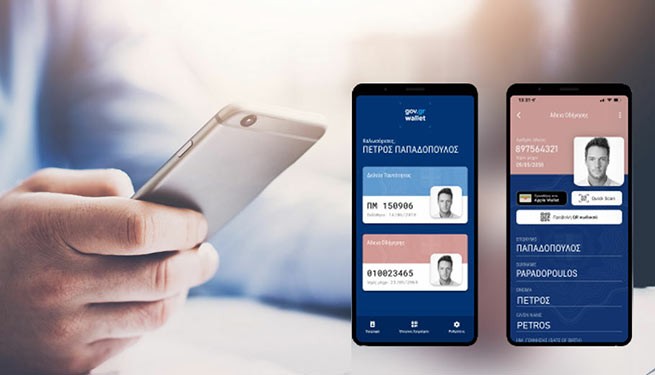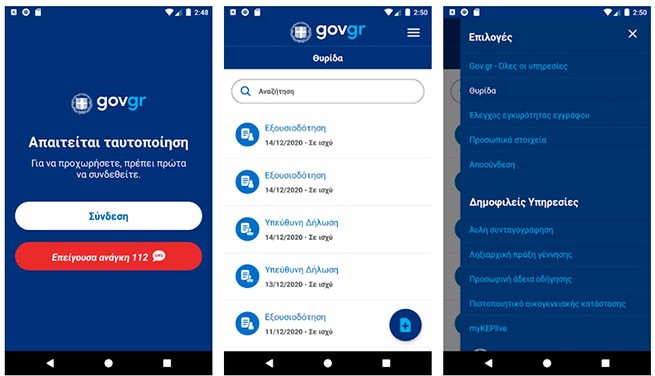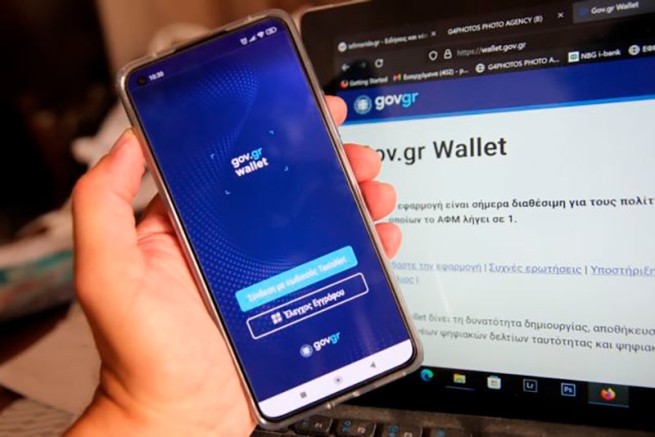A few years ago, a relatively simple process, adding, for example, a new type of activity by a freelancer, required the participation of at least ten different employees.
One of them certifies that the person requesting the extension of activity has no VAT debt, the other that aggregated reporting was submitted. Another… eight people had to certify that there was no payroll tax (regardless of whether the trader hired staff), a periodic VAT return was filed, and the officials who reviewed the application before them did not ask for any confirmation documents (eg. affidavit). This process, which, in the best case scenario, was completed in about 2 weeks, is now mainly carried out through the digital portal of the Hellenic Tax Agency in a couple of hours.
Such bureaucratic routine, once commonplace, tends to become a rarity, or at least that is the goal of the interoperability center of the Ministry of Digital Management. It is an information system developed by the General Secretariat for Public Administration Information Systems with the aim of unifying public sector e-services. In October 2019, by decision of the Minister of State and Digital Authority, Kyriakos Pierrakakis, the Interoperability Center was upgraded to a data exchange hub between public sector institutions and enterprises. Technically, “communication” of public sector systems is provided through automatic calls that take place in the background and are based on the XML Web Services technology familiar to IT engineers. Automatic interoperability of separate systems has recently made it possible to submit and automatically evaluate applications for fuel subsidies (fuel pass). The computer program communicated with other computers and took from them the information necessary to decide whether the applicant was eligible for a fuel pass. Otherwise, the beneficiaries themselves would have to provide the relevant service with the necessary supporting documents to demonstrate whether they meet the income criteria, whether they own the vehicle, whether it is insured, immobilized or not.
The Interoperability Center now supports more than 1,480 services (up from about 280 in February 2021) available through the single digital portal Gov.gr, making it unnecessary to visit most institutions. To date, about 728 million automated requests (web services) have been reportedly made to find these services, and this number is expected to exceed 1 billion by the end of the year. User authentication is the web service used in most digital transactions, followed by e-tickets, social security data, and individual verification.
Public sector digital transactions to reach 1 billion this year, up from 9 million in 2018
“Our goal is that the citizen’s contact with the state machine is limited to only expressing his will regarding the necessary service. Everything else should be done through automated procedures,” explains Demosthenes Anagnostopoulos, Secretary General for Public Administration Information Systems. Tentatively, when “communication” between all individual systems of the state becomes possible, it will not be necessary to submit 24 documents in digital or paper form, such as a certificate of commencement of business or a certified photocopy of a beekeeping booklet, etc., in order to issue a license for itinerant trade. In other words, the interested person will simply indicate which service he needs, and the collection of documents and cross-checking of the necessary data will be carried out by a computer. This “magic picture” seems to come true sooner or later.
A few days ago, the Audit Chamber, in the course of a pre-contractual legality check, approved a framework agreement that will be implemented by the “information society”, the digital projects division of the Ministry of Digital Management. The project, worth 55.8 million euros (including option and VAT), aims to develop Web Services, the technology necessary for government information systems to “speak the same language.” And that a citizen applying for a license to rent recreational watercraft does not have to provide a solemn declaration that he is not in a state of bankruptcy.
“The public information systems interoperability project is critical to the ongoing modernization of public services. By merging government registers and applications with each other, we make it possible to serve citizens and businesses easily and quickly, declaring as little data as possible, since most of it is retrieved automatically. And most importantly “We are creating a framework for the unified operation and control of public administration with the transparency and security of electronic transactions,” explains Stavros Astenidis, Electrical Engineer and CEO of the Information Society. “Expanding interoperability goes hand in hand with the exponential progress of digital transactions in the public sector, number of which this year is expected to reach 1 billion from 9 million in 2018.”
“Interoperability replaces the production of documents in a safer and more efficient way, taking the burden off citizens and public administrations. It also ensures the accuracy and minimization of data in transit,” notes Anagnostopoulos.

The realm of documents
Expanding interoperability will allow the continued digitization of a public sector that continues to be flooded because the bureaucracy that has been the way of doing things for decades cannot be dealt with overnight. Moreover, “Mitos” presented by Mr. Pierrakakis and Secretary General for Digital Governance and Facilitation Leonidas Christopoulos last summer shows that a very large number of administrative procedures have remained in the paper era. Mitos is the National Register of Procedures, an online platform (mitos.gov.gr) that accurately describes the steps, costs, number of documents and time it takes for the public sector to complete a series of administrative procedures. This is one of the most time-consuming 1,980 procedures registered in the Register to date, related to employment and investment.
For example, to issue a license to establish and operate a higher private school of drama or dance (a legal entity under state law), 17-18 documents are required. The cost of the procedure ranges from €147 to €440 and the review time is two months. Interested parties must begin by submitting an application – a solemn declaration, and then provide proof of payment of the deposit, a floor plan of the school premises signed by an engineer, a sectional view showing the net height of the premises signed by an engineer, and a solemn declaration of two structural engineers of structural sufficiency and strength building. To complete the procedure, you must provide a copy of the building permit, a certificate from the City Planning Authority that the location and operation of a drama school and a dance school are allowed on the territory of this quarter, a certificate from the fire department, permission to change the type of use to a higher drama school or a higher dance school , the school’s internal rules, a list of names of instructors for each course taught, and a copy of the bylaws. The list must include photocopies of photocopies of educational documents and identification cards, a solemn declaration that the applicant is not a public servant, a curriculum vitae with detailed chronological reference, a copy of the meeting of the governing body of the NPO with a proposal from the director of the higher education institution, and a solemn declaration that the applicant fulfilled his military service obligations, if he is the applicant.
In addition, up to 15 documents are required to obtain a license for the rental of marine pleasure craft, their cost is from 140 to 250 euros, and the approval period takes 60 days.
The procedure for registering as a dental assistant is also time consuming, requiring 11 documents and 90 days. Three months is also required to obtain a midwife certificate, for this you need to provide eight documents and pay 8 euros. It takes 60 days to obtain an outdoor commercial license and up to 24 documents in total, including TaxisΝετ’s business commencement certificate, a certified photocopy of the beekeeping booklet, etc. It takes at least two months to complete the purchase of property from the municipality through an auction. The procedure includes checking the legal weight of the property by the legal department of the municipality, forwarding the decision of the municipal council to the relevant decentralized administration for legality control and transcribing the contract of sale. In contrast, for the “new generation” activities, for which the steps have been written from the beginning, the procedures are simpler. To issue, for example, a license to grow industrial hemp requires up to six documents and a period of only 15 days.

Accelerated implementation of new digitization projects
In the near future, the information society will sign implementation contracts with a total of twelve project contractors, approximately 30 telecommunications service providers, IT and consulting companies. The implementation of this framework agreement, which provides for the conclusion and rotation of contracts lasting several months, is expected to yield rapid results. As the Information Society explains, each scheme undertakes to implement one sub-project out of a large number of projects included in the CSO interoperability project. When he completes it – estimated to take about three months – the new subproject will be handed over to the next contractor in the ranking order. At the end of the first round, when all 12 schemes are committed to the contracts, the assignments will start over from the first place contractor. The actions that each of the 12 consortiums will take to implement in government bodies and organizations are currently being determined.
As explained by Angelos Karvounis, Head of Interoperability at the General Secretariat for Information Systems, and George Kappos, adviser to Mr. Anagnostopoulos, the aim of this project is to radically improve the level of digital services provided. As they explain, in order to make it possible to obtain information that is more complex, comes from multiple sources and is necessary for licensing large investments, urban real estate planning, or data exchange between services for government orders. To make this possible, all the individual information systems of the public sector must be interconnected, and a structure resembling a board with numbers must be created, on which various combinations of numbers are automatically performed. For example, information about whether and how many children in a family belong to the same marital status can be easily obtained if the systems are compatible.
The success of the interoperability project is facilitated by the fact that most of the data needed to process transactions with citizens and businesses already exists in databases in the state machine. There are also cases where institutions keep their records in files but their digitization is in the process.
It should be noted that the first organized attempt to integrate public sector information systems was made under the Cleisthenes program, which was also funded by the Second Community Support Framework. In May 2009, all transactions with the state also began to be carried out through the Hermes digital portal, but the number of available digital services barely exceeded 100. And in 2017, as part of the e-gov now campaign, an attempt was made to connect individual information systems and registers.







More Stories
Greece will not give Ukraine either S-300 or Patriot (video interview)
MP beat up his colleague in the Greek Parliament
EU Commission warns Greece and Cyprus against fraud